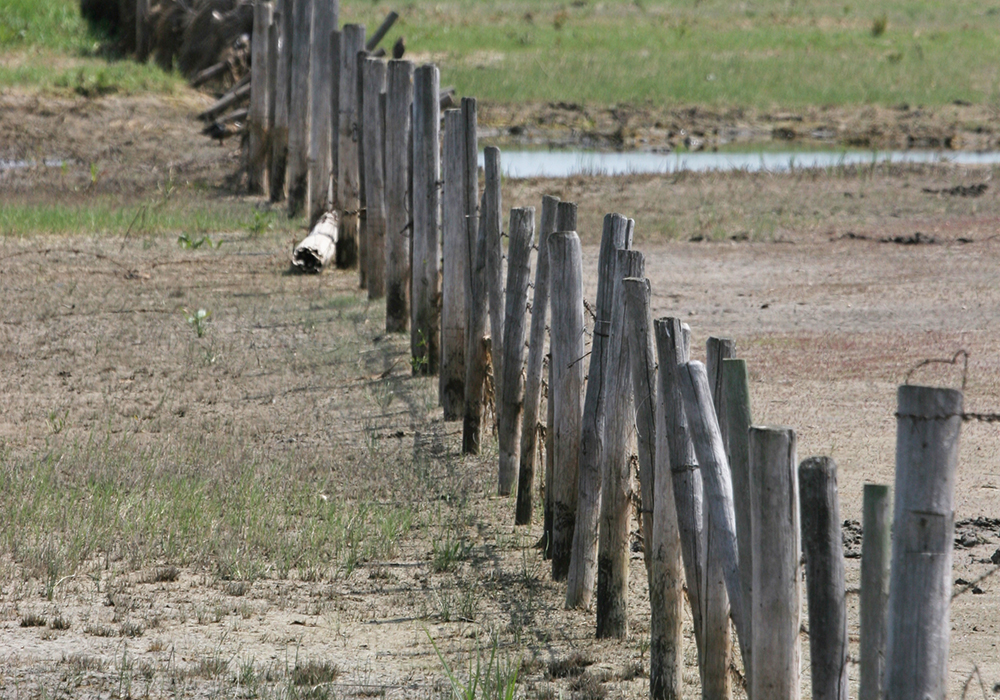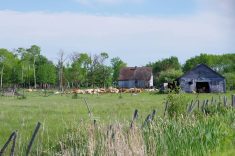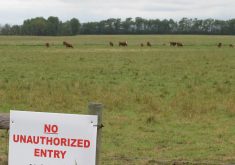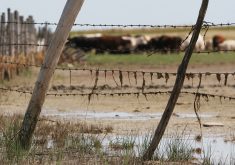A livestock operation in the Saskatchewan Rural Municipality of Piapot is in quarantine after laboratory testing confirmed nine animals have died from anthrax.
Saskatchewan disease surveillance veterinarian Dr. Wendy Wilkins said there were about 100 animals in the pasture where the deaths occurred. The remaining animals are on antibiotics and will be vaccinated.
The government is not identifying which type of animal is involved, saying only ruminants, to help protect the identity of the operator. However, they were not cattle.
Wilkins said officials are treating the deaths as a single outbreak.
Read Also

Why feds imposed EV tariffs
Moe and Kinew have a fight on their hands when it comes to eliminating the EV tariff. Canada has to worry about pissing off the U.S. and Mexico and hundreds of thousands of auto workers.
“We’re not concerned about it spreading beyond this herd,” she said.
“The source of infection is most likely the animals have access to a dried-up slough in their pasture. They were recently introduced to this pasture and the producer did note that they had been in the slough bottom and were grazing and digging around in that. This is pretty consistent with exposure to anthrax.”
The dead animals have been properly disposed of on site. Wilkins said the best method is to dig a pit, add a burnable material, put the carcasses on top and burn them down to ash, and then bury everything.
“Fire is really the only thing that kills spores effectively,” she said.
Anthrax spores can live in the soil for decades and cases are often detected when the soil is disturbed by flood or drought. There is increased risk in dry years, when grazing animals have more access to areas where spores might have built up. Last year, there was one case, but in 2006 several hundred animals died, most of them in northeastern and east-central Saskatchewan.
Sheep, goats, deer, bison and cattle, are susceptible.
Wilkins said this event reminds people that anthrax can occur anywhere and the best protection is to vaccinate animals.
She also said that good cleaning practices after disposal can help lower the chances of spores escaping. Typically, a bucket loader is used and sanitized.
“The metal parts get heated with a tiger torch and non-metal parts like the tires would get soaked in bleach,” she said.
Animals that die from anthrax often show no signs of illness. Producers should contact their veterinarians if they suspect the disease and take caution when handling the carcass. Humans can be infected if they are in direct contact with sick or dead animals and should contact their doctors if they believe they might be exposed.
Meanwhile, Wilkins said there is ongoing monitoring for avian influenza, chronic wasting disease and West Nile Virus.
She said officials have been testing wild birds for avian influenza through the summer and are watching to see what happens with migrating birds as they soon begin to head south. Fields along migratory bird paths were littered with carcasses of affected birds this spring and she said it could be just as bad this fall.







![Anthrax spores live in the soil and are buoyant in water. When sloughs and potholes dry up, the spores remain and concentrate. Disease surveillance veterinarian Dr. Wendy Wilkins said as the grazing season winds down and animals get into less desirable forage the chances of getting to those spores increase. | National Institute of Standards and Technology [Public domain], via Wikimedia Commons photo](https://static.producer.com/wp-content/uploads/2019/08/03152802/Anthrax_spores_5940425745.jpg)








